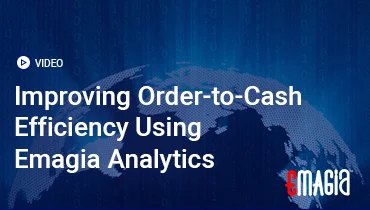In the vibrant marketplace of today, businesses are constantly striving to maximize their profitability and operational efficiency. A significant, often hidden, drag on these efforts comes from the costs associated with accepting electronic payments, particularly credit cards. These charges, encompassing interchange fees, assessment fees, and processor markups, chip away at every transaction, impacting the bottom line. For many merchants, the idea of recovering these expenses has become increasingly appealing.
This desire to recoup payment processing costs has led to the growing practice of surcharging – adding a small fee to customer transactions when they pay with a credit card. While conceptually straightforward, achieving comprehensive cost recovery through such a program is far from simple. It involves navigating a labyrinth of legal regulations, adhering to intricate card network rules, deploying precise technology, and managing customer perceptions with care. Many businesses struggle to ensure that the payment adjustment is consistently applied to all eligible transactions without triggering compliance issues or customer dissatisfaction.
This comprehensive guide will delve deep into the strategic art of maximizing cost recovery through payment adjustments. We will uncover the essential steps and best practices needed to ensure that every applicable transaction carries its proportionate share of processing expenses, all while maintaining compliance and fostering positive customer relations. Get ready to master the intricacies of fee application to enhance your revenue optimization and ensure fair cost distribution across your payment acceptance channels.
Understanding Payment Adjustments: Beyond Basic Fees
To embark on the journey of comprehensive cost recovery, it’s crucial to first grasp the fundamental nature of payment adjustments and the underlying fees they aim to offset.
What is Credit Card Surcharging?
Credit card surcharging is the practice of adding an extra fee to a customer’s transaction when they choose to pay with a credit card. This additional charge is specifically designed to offset the payment processing fees that merchants incur for accepting that card. It’s distinct from a ‘cash discount,’ which offers a lower price for cash payments, and a ‘convenience fee,’ which is charged for the convenience of using an alternative payment channel (e.g., online payment for a bill that is usually mailed).
The primary goal of this payment adjustment is to reduce the merchant’s overall cost of acceptance, ensuring that the business retains more of its gross revenue from sales. It directly addresses the impact of interchange fees, which are the largest component of processing costs, paid to the customer’s card-issuing bank.
The “Cost of Acceptance” Challenge for Businesses
Every time a customer swipes, taps, or enters credit card details, merchants incur various payment processing fees. These typically include:
- Interchange Fees: The largest portion, paid by the merchant’s bank to the customer’s card-issuing bank. These vary widely based on card type, transaction risk, and industry.
- Assessment Fees: Charged by the payment card networks (Visa, Mastercard, American Express, Discover) for using their networks.
- Payment Processor Fees: Charged by your merchant account provider or payment gateway for their services in facilitating the transaction.
Collectively, these charges represent a significant expense for businesses, particularly those with high volumes of card transactions. Businesses consider passing on these costs to protect their profit margins and ensure that the method of payment doesn’t disproportionately erode their revenue.
The Vision: Achieving Comprehensive Fee Application Across Transactions
For businesses, the ultimate goal of implementing a payment adjustment program is to achieve comprehensive fee application. This means ensuring that the applicable charge is levied on every qualifying transaction, maximizing the intended cost recovery.
Why Aim for Maximum Coverage in Surcharge Programs?
Striving for comprehensive coverage in payment adjustment programs offers several compelling benefits:
- Maximize Revenue Optimization: By recovering a greater percentage of processing costs, businesses can significantly improve their overall profitability and revenue optimization.
- Ensure Fairness in Cost Distribution: It ensures that the specific cost of acceptance for a credit card payment is borne by the customer choosing that payment method, rather than being spread across all customers (including those paying with cash or debit) through higher base prices.
- Simplify Financial Reconciliation: Consistent and accurate application of the fee simplifies accounting and financial reconciliation processes, as expected costs and recoveries are more predictable.
This approach moves beyond partial recovery to a more complete and strategic management of payment expenses.
What “100% Transaction Coverage” Truly Means
Achieving “100% transaction coverage” for a payment adjustment program doesn’t mean charging every single customer extra. Instead, it refers to the ideal state where the applicable fee is consistently applied to *all eligible credit card transactions* in a compliant manner. It also implies correctly *excluding* non-eligible transactions, such as those made with debit cards, prepaid cards, or in states where such fees are prohibited by surcharge rules.
The objective is to eliminate “leakage” where fees are inadvertently absorbed by the merchant due to technical limitations, lack of awareness, or non-compliance, ensuring thorough transaction coverage.
Navigating the Legal and Card Network Landscape: Compliance is Key
The path to comprehensive fee application is paved with strict rules. Navigating surcharging compliance is arguably the most critical aspect, demanding meticulous attention to legal and card network rules.
State-Specific Surcharge Rules and Regulations
Surcharge rules vary significantly by jurisdiction. While credit card surcharging is permitted federally in the United States, several states have laws that either prohibit it entirely or impose specific restrictions on its application. Businesses must conduct thorough research and, ideally, consult legal counsel to ensure their program adheres to all applicable state and local laws. This constant vigilance is a cornerstone of effective compliance management.
Payment Card Network Rules and Disclosure Requirements
Beyond state laws, all major payment card networks (Visa, Mastercard, American Express, Discover) impose their own stringent surcharge rules that merchants must follow. These typically include:
- Maximum Surcharge Caps: The additional charge cannot exceed a specific percentage (e.g., 3% for Visa, 4% for Mastercard, though these can change) or the merchant’s actual cost of acceptance, whichever is lower. The intent is cost recovery, not profit.
- Mandatory Notification: Merchants are required to notify the relevant payment card networks (and often their acquiring bank) at least 30 days before implementing or making changes to their program.
- Clear Disclosure Requirements: Transparent surcharging is non-negotiable. Customers must be clearly informed about the fee both at the entrance to the business and at the point of sale surcharging (e.g., cashier counter, checkout page). The exact percentage should be disclosed, and the additional charge must be itemized on the receipt.
- Exclusion of Debit/Prepaid Cards: Surcharge rules strictly prohibit applying a fee to debit card or prepaid card transactions, as their interchange fees are typically much lower or regulated differently. The system must be able to differentiate.
- Uniformity: The fee must generally be applied uniformly across all credit card brands within a given payment channel (e.g., if you charge for Visa, you must charge the same percentage for Mastercard).
Adherence to these disclosure requirements is vital for legal operation and maintaining trust, playing a huge role in compliance management.
PCI Compliance and Data Security in Surcharge Programs
Implementing any payment processing solution, including one for fee application, requires strict adherence to PCI compliance (Payment Card Industry Data Security Standard). This ensures the secure handling, storage, and transmission of cardholder data. Protecting sensitive financial information is paramount, not just for regulatory reasons but also for maintaining customer trust and avoiding costly data breaches.
Implementing Technology and Infrastructure for Full Coverage
Achieving seamless and comprehensive fee application relies heavily on the right technology and robust infrastructure. This is where surcharge automation truly comes into play.
Choosing the Right Payment Processor and Payment Gateway
The foundation of your solution lies in selecting a payment processor and payment gateway that not only support credit card surcharging but do so compliantly and with sophisticated capabilities. Your provider should be able to:
- Automate Surcharge Application: Automatically calculate and apply the correct percentage based on card type and transaction details.
- Handle Exclusions: Automatically bypass the fee for debit cards, prepaid cards, or transactions from prohibited states.
- Provide Clear Reporting: Offer transparent reporting on fees collected versus fees incurred.
- Support Various Channels: Work across your point of sale surcharging terminals, online surcharging platforms, and mobile payment solutions.
This choice directly impacts the feasibility of achieving comprehensive transaction coverage.
Smart Surcharge Logic and Surcharge Automation
Modern payment systems integrate surcharge automation logic that dynamically adjusts the transaction total. This “smart” logic is crucial for ensuring accuracy and compliance. It should be capable of:
- Real-time Card Type Identification: Differentiating between credit, debit, and prepaid cards at the point of transaction.
- Geo-location Awareness: Applying or suppressing the fee based on the customer’s transaction location to comply with state laws.
- Dynamic Pricing Integration: While distinct from dynamic pricing strategies for products, the system should allow for flexible configuration of the fee percentage if surcharge rules change or if you need to adjust it within caps.
- Seamless Transaction Processing: Integrating the fee calculation smoothly into the overall transaction processing workflow without disrupting the customer experience.
This technical precision ensures accurate cost recovery.
Integration Across All Payment Acceptance Channels
For truly comprehensive fee application, the system must operate consistently across all your payment acceptance points:
- In-Person (POS): Terminals must be configured to automatically apply the fee and display it clearly before payment.
- Online (E-commerce): Your payment gateway and checkout process must clearly display the added fee before the customer confirms the purchase (online surcharging).
- Mobile Payments: For mobile POS devices or in-app payments, the logic must be uniformly applied.
- Recurring Billing: If you have subscription services, ensure the system correctly applies the fee to recurring credit card charges while adhering to pre-notification disclosure requirements.
Consistency across channels reinforces transparent surcharging and maximizes transaction coverage.
Customer Communication and Operational Excellence: Building Trust
Beyond legal and technical aspects, the success of any fee application program hinges on how it is communicated to and perceived by your customers. Maintaining a positive customer experience is paramount.
Transparent Surcharging: Educating Your Customer Experience
Transparency is key to avoiding customer backlash. Businesses must proactively and clearly inform customers about the fee. This involves:
- Prominent Signage: Displaying clear notices at the entrance of your physical store and at the point of sale surcharging terminal.
- Website Disclosures: Prominently featuring information on your website’s payment policy page and during the online surcharging checkout process.
- Itemized Receipts: Ensuring the additional charge is clearly broken out and labeled on the customer’s receipt.
- Clear Language: Explaining simply that the fee helps offset payment processing fees incurred when using a credit card.
This open approach contributes significantly to a better customer experience and reduces confusion, crucial for long-term revenue optimization.
Staff Training for Effective Communication
Your front-line staff are often the first point of contact for customer inquiries about the fee. They must be well-trained to:
- Explain the Policy: Clearly and confidently articulate why the fee is applied.
- Handle Objections: Address customer concerns professionally and empathetically.
- Identify Card Types: Correctly identify credit vs. debit cards to ensure the fee is only applied when permitted.
- Offer Alternatives: Inform customers about other payment methods (e.g., cash, debit) that do not incur the additional charge.
Empowered staff are vital for maintaining a positive customer experience and avoiding misunderstandings.
Streamlining Refund and Dispute Management
It’s imperative that if a customer receives a refund for a transaction that included the fee, the fee amount is also refunded. Failure to do so can lead to disputes and violate surcharge rules. Similarly, having a clear process for handling chargebacks related to the fee application (e.g., customer claiming they were overcharged) is crucial for efficient dispute resolution.
Continuous Monitoring and Optimization for Compliance and Revenue
Implementing a program of cost recovery is not a one-time setup. It requires ongoing vigilance and refinement to ensure sustained compliance management and maximum revenue optimization.
Regular Compliance Audits
Businesses should regularly perform internal audits to ensure their fee application program remains compliant with evolving surcharge rules from both state laws and payment card networks. This includes checking signage, website disclosures, and actual transaction records. Adapting promptly to any changes in regulations or card network rules is essential to avoid penalties.
Analyzing Fee Application Performance
It’s crucial to track internal metrics. How often is the fee successfully applied to eligible transactions? Are there any instances of the fee being applied to debit cards inadvertently? Analyzing these figures helps identify any gaps in transaction coverage or technical issues that need addressing. This data-driven approach informs continuous improvement and ensures higher payment acceptance rates with appropriate cost recovery.
Customer Feedback and Sentiment Analysis
Actively solicit and monitor customer feedback regarding the fee application. This could be through surveys, online reviews, or direct customer service interactions. Understanding customer sentiment allows businesses to refine their communication strategies and ensure the program is not negatively impacting customer experience or loyalty. This feedback loop is essential for long-term success.
Ongoing Payment Processing Fee Analysis
The underlying payment processing fees, particularly interchange fees, can change. Businesses should regularly review their overall cost of acceptance to ensure that their applied fee percentage remains appropriate and within the caps set by surcharge rules. This continuous analysis ensures the program remains effective for revenue optimization.
Emagia: Empowering Seamless and Compliant Payment Optimization
In today’s dynamic payment landscape, effectively managing and optimizing your cost of acceptance through compliant fee application is a strategic imperative. Emagia’s AI-powered Order-to-Cash (O2C) platform is meticulously designed to provide leading-edge solutions that streamline and optimize your entire payment acceptance ecosystem, ensuring you achieve comprehensive transaction coverage for cost recovery with unparalleled efficiency and compliance.
Emagia centralizes and unifies all your critical payment data – from various payment gateway transactions to detailed interchange fees analysis. Our cutting-edge Artificial Intelligence and Machine Learning algorithms intelligently analyze this vast amount of information, acting as a sophisticated system for surcharge automation. Imagine leveraging AI to dynamically identify eligible credit card transactions, automatically apply the correct fee based on the latest surcharge rules and state regulations, and seamlessly exclude debit or prepaid cards. Our platform ensures meticulous adherence to disclosure requirements, providing automated prompts for point of sale surcharging and ensuring transparent communication during online surcharging processes.
Beyond automating the fee application, Emagia provides robust features for comprehensive compliance management. Our dashboards offer real-time visibility into your transaction coverage rates, helping you quickly identify any leakage or non-compliance issues. We empower your team with detailed analytics to monitor payment processing fees and optimize your revenue optimization strategy. By partnering with Emagia, you’re not just applying fees; you’re gaining an intelligent financial partner that transforms the complex task of payment optimization into a strategic advantage, minimizing costs, enhancing customer experience, and securing your financial resilience in the rapidly evolving world of financial services.
Frequently Asked Questions (FAQs) About Achieving Full Surcharge Coverage
Is surcharging credit card transactions legal in all states across the U.S.?
No, surcharging credit card transactions is not legal in all U.S. states. While permitted federally, some states have specific laws that either prohibit the practice entirely or impose strict limitations on its application. Businesses must thoroughly research and comply with their specific state’s surcharge rules to avoid legal penalties.
Can a business apply a fee to debit card transactions as well?
No, surcharge rules strictly prohibit applying an additional fee to debit card or prepaid card transactions. These rules are set by payment card networks (like Visa and Mastercard) because debit and prepaid cards typically have much lower interchange fees or are regulated differently than credit cards. Any system implementing cost recovery must be able to differentiate card types.
What is the maximum amount a merchant can charge as a surcharge?
The maximum amount a merchant can charge as a surcharge is capped by the payment card networks and sometimes by state law. Typically, this cap is around 3% to 4% of the transaction amount, or the merchant’s actual cost of acceptance for that credit card, whichever is lower. Businesses are not allowed to profit from these fees; they are intended solely for cost recovery.
Do merchants need to notify card networks before implementing a surcharge program?
Yes, merchants are typically required to notify the relevant payment card networks (e.g., Visa, Mastercard, American Express) and their acquiring bank at least 30 days prior to implementing a surcharge program. This disclosure requirement is a crucial part of surcharging compliance and ensures all parties are aware of the new practice.
Is a surcharge the same as a convenience fee or a cash discount?
No, a surcharge is not the same as a convenience fee or a cash discount. A surcharge is specifically an extra fee applied to credit card surcharging to cover payment processing fees. A convenience fee is charged for the convenience of using an alternative payment channel (e.g., online or phone payment). A cash discount is a reduction in price offered to customers who pay with cash or debit, essentially making the listed price the credit card price.
What are the key disclosure requirements for transparent surcharging?
The key disclosure requirements for transparent surcharging include: clearly posting notices at the business entrance and at the point of sale surcharging (or on the checkout page for online surcharging) stating that a fee will be applied to credit card transactions. The exact percentage must be disclosed, and the additional charge must be itemized separately on the customer’s receipt. This aims to ensure a clear customer experience.
How does implementing a surcharge impact the overall customer experience?
Implementing a surcharge can impact the overall customer experience if not handled transparently. Customers may feel penalized for using their preferred payment method. However, with clear disclosure requirements, upfront communication (explaining it’s for cost recovery), and well-trained staff who can answer questions, businesses can mitigate negative reactions and maintain a positive customer experience while optimizing their revenue optimization.
Conclusion: Powering Your Profitability with Strategic Payment Optimization
As we’ve meticulously explored, achieving comprehensive transaction coverage for cost recovery through payment adjustments is a strategic imperative for any business aiming to optimize its profitability in today’s electronic payment landscape. While the allure of recouping payment processing fees is strong, successfully implementing and managing such a program demands a multi-faceted approach.
The journey requires unwavering commitment to surcharging compliance with complex state laws and stringent card network rules. It necessitates the deployment of smart surcharge automation technology that ensures consistent and accurate fee application across all payment acceptance channels. Crucially, it relies on transparent customer communication and well-trained staff to maintain a positive customer experience.
By diligently navigating these complexities, continuously monitoring performance, and leveraging advanced solutions, businesses can transform the challenge of payment processing fees into an opportunity for significant revenue optimization. This strategic mastery ensures that every applicable transaction contributes its fair share, safeguarding the bottom line and positioning your business for sustainable financial health.



